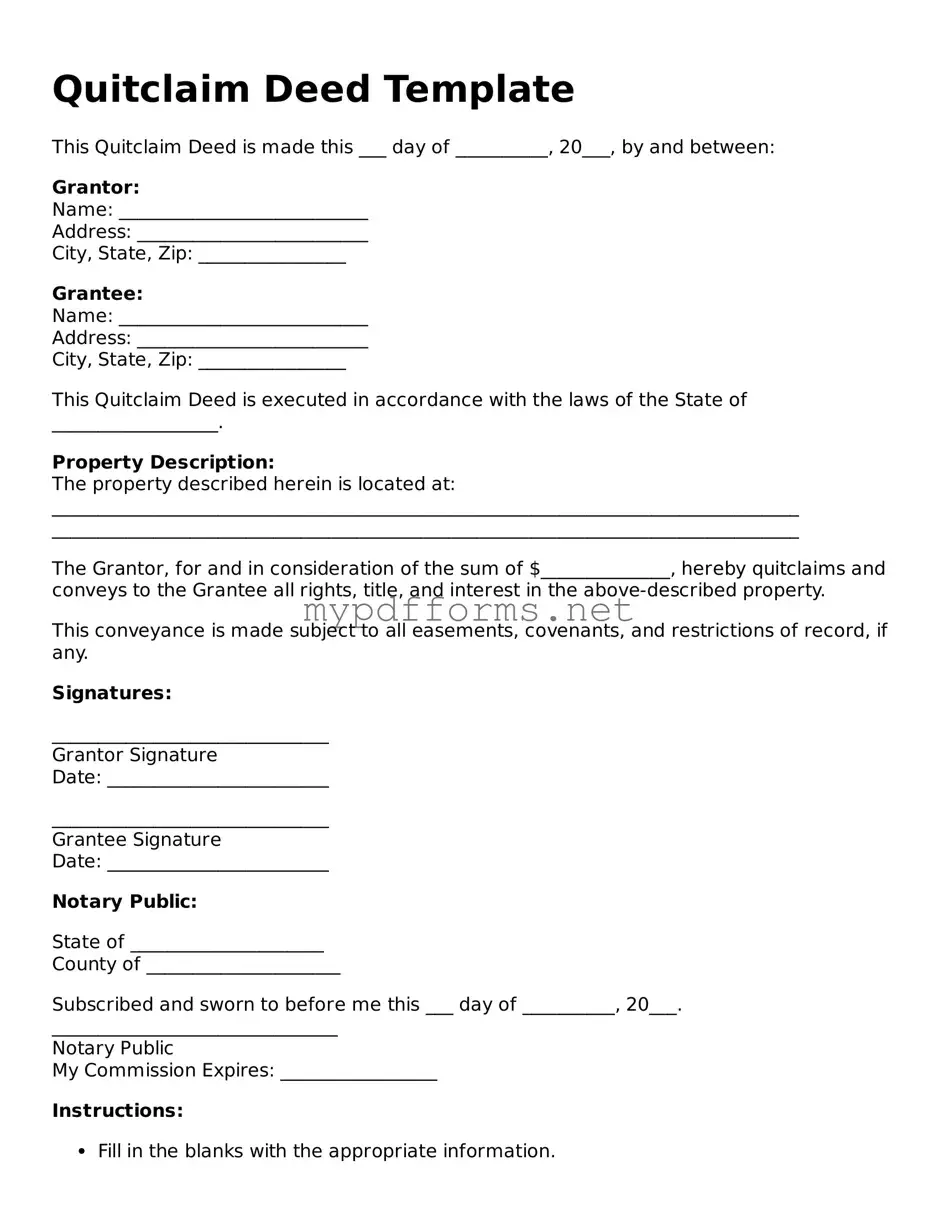A warranty deed is a document that transfers ownership of real estate and provides a guarantee that the title is clear of any claims. Unlike a quitclaim deed, a warranty deed offers the buyer protection against potential issues with the title. The seller warrants that they have the right to sell the property and that there are no undisclosed encumbrances. This assurance makes warranty deeds a more secure option for buyers who want peace of mind regarding their investment.
A grant deed is similar to a warranty deed in that it transfers ownership of real property. However, it provides fewer guarantees than a warranty deed. A grant deed assures that the seller has not sold the property to anyone else and that the property is free from any encumbrances created by the seller. While it offers some protection, it does not guarantee a clear title against all claims, making it less secure than a warranty deed but more protective than a quitclaim deed.
A special warranty deed is a hybrid between a warranty deed and a quitclaim deed. It transfers property ownership while guaranteeing that the seller has not caused any title issues during their ownership. Unlike a general warranty deed, which covers the entire history of the title, a special warranty deed only covers the period when the seller owned the property. This document is often used in commercial real estate transactions where the seller wants to limit their liability for past issues.
A bargain and sale deed conveys property without any warranties. This type of deed implies that the seller has the right to sell the property but does not guarantee that the title is clear of claims. It is often used in foreclosure sales or tax sales, where the seller may not have full knowledge of the property's title history. Buyers should exercise caution and conduct thorough title searches when dealing with bargain and sale deeds.
A deed of trust is a document used in real estate transactions that involves a third party. In this arrangement, the borrower transfers legal title to a trustee, who holds it as security for a loan. The deed of trust is similar to a mortgage but involves a different legal structure. It provides a clear path for the lender to foreclose on the property if the borrower defaults, ensuring that the lender's interests are protected.
An easement deed grants a specific right to use a portion of someone else's property for a particular purpose, such as access to a road or utility lines. While it does not transfer ownership, it is similar to a quitclaim deed in that it can be used to relinquish rights. An easement deed can be permanent or temporary and is essential for ensuring that property rights are respected and maintained.
A lease agreement, while not a deed, is a legal document that grants a tenant the right to use a property for a specified period. It is similar to a quitclaim deed in that it transfers certain rights from the landlord to the tenant. However, a lease agreement does not transfer ownership of the property; rather, it establishes the terms of use, including rent and duration. This document is vital for protecting both parties' rights in a rental situation.
The Articles of Incorporation form is a legal document that establishes the existence of a corporation in the state of New York. This essential paperwork outlines key details about the corporation, including its name, purpose, and structure. Individuals looking to create a formal business entity should ensure proper completion and filing of this form, which can be facilitated by resources such as newyorkpdfdocs.com/.
A title transfer document is used to formally transfer ownership of property from one party to another. This document is often required by state law and is similar to a quitclaim deed in that it facilitates the change of ownership. However, a title transfer document may also include warranties or guarantees about the title, depending on the specific terms agreed upon by the parties involved.
A life estate deed is a unique type of deed that allows a person to live in a property for the duration of their life, after which the property passes to another party. It is similar to a quitclaim deed in that it transfers property rights but does so with specific conditions attached. This type of deed can be useful for estate planning, allowing individuals to maintain control over their property while ensuring that it is passed on to heirs without going through probate.
